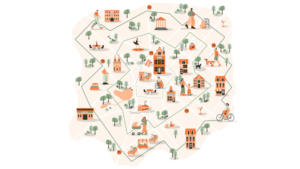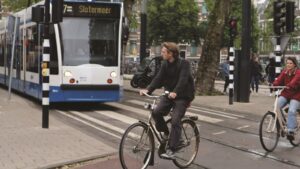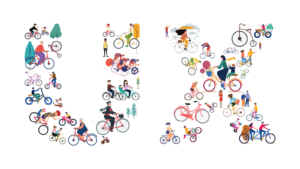The use on human-powered vehicles and personal transportation devices: walking, cycling, scooters, electric bikes etc.
Frequently Asked Questions about Micro and Active Mobility
1. Do I need a degree to work in Micro and Active Mobility?
A degree can be helpful, but it’s not always a must for a career in micro and active mobility. Many jobs in the field focus more on practical experience in areas like urban planning, cycling infrastructure design, and user experience for mobility. Technical skills in data analysis, urban transport planning, and active mobility systems can sometimes help open doors even without academic qualifications.
2. What are common topics covered in Micro and Active Mobility courses?
Topics covered include the use of human-powered vehicles, reducing car dependency, and user experience (UX) in urban mobility. You’ll also dive into inclusive cycling, 15-minute cities, and designing liveable neighbourhoods.
3. What skills or experience do I need to start a career in Micro and Active Mobility?
To get started, you’ll need a good grasp of urban planning, environmental science, and experience with data analysis and shared mobility apps. Additional skills in design, engineering, mobility technologies like e-scooters, as well as stakeholder engagement, can give you an extra edge.
4. What are some common career paths for someone learning about Micro and Active Mobility?
You can pursue roles like urban planner, cycling infrastructure designer, active mobility coordinator, user experience (UX) designer for mobility, micro-mobility program manager, and more. People in this field often find opportunities in urban planning agencies, micro-mobility companies, last-mile logistics, and non-profits focussed on sustainable transport and active mobility.
5. What are the benefits of taking an online course about Micro and Active Mobility?
An online course in Micro and Active Mobility offers flexibility and convenience, letting you learn at your own pace from anywhere. Plus, these courses are often updated, which means they provide current knowledge and practical skills that are directly useful in the industry and could lead to job opportunities.
6. Why is it important to learn about Micro and Active Mobility?
It’s essential to learn about Micro and Active Mobility because they promote sustainable and healthy transportation options. This knowledge equips you to help develop more liveable, accessible, and environmentally friendly urban environments.
7. How long do courses about Micro and Active Mobility typically take to complete?
Course lengths vary, but most can be completed in a few days to a couple of weeks, depending on the material and your speed.
For detailed information on specific courses, visit these pages:











